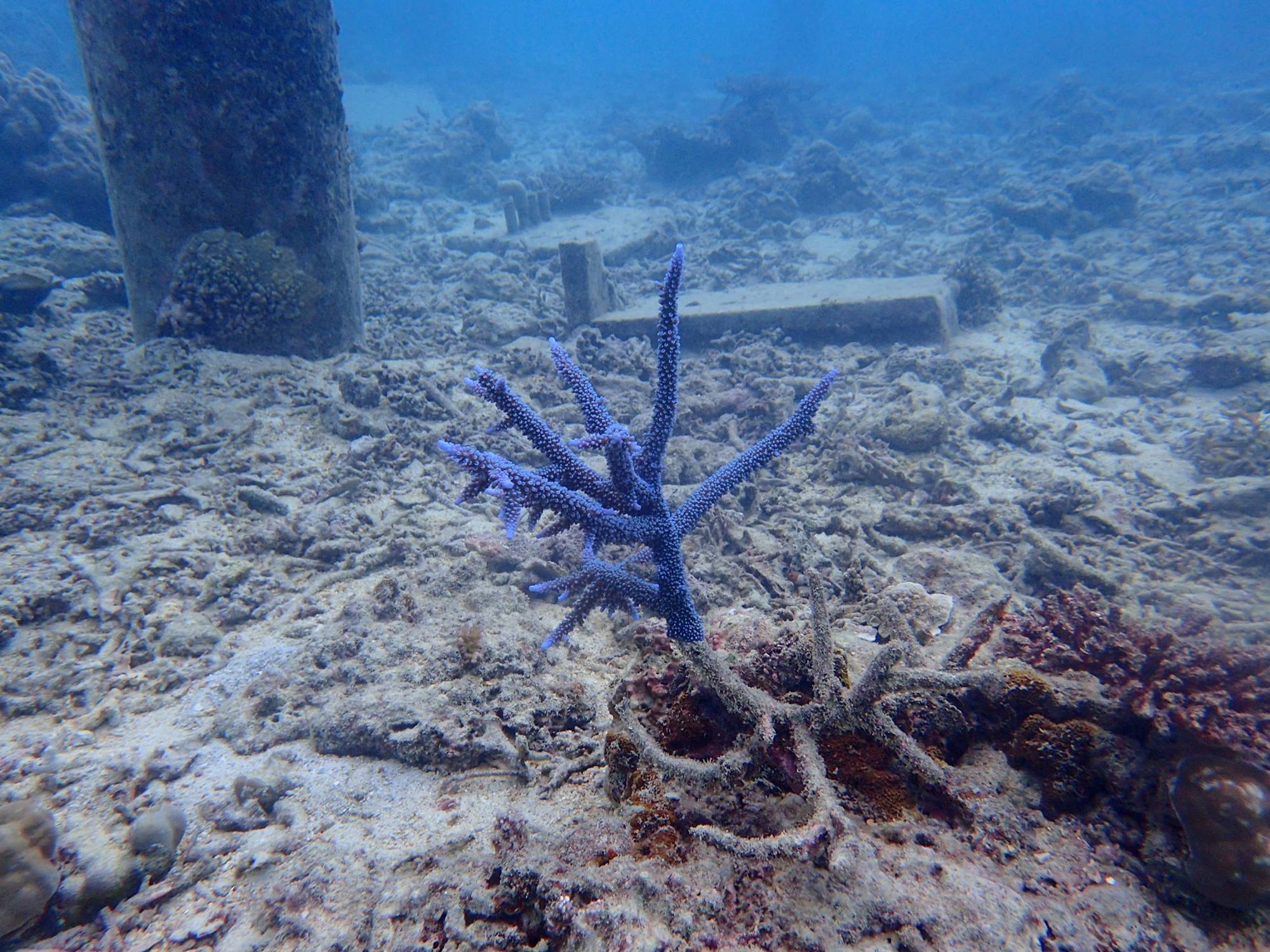Viewed from a satellite, Japan's southern Yaeyama archipelago is a splatter of green blobs ringed in turquoise. Closer to Earth, those encircling lagoons take on more complex shades of blue, often streaked with white lines made by dive boats, cruise ships, rusting inter-island ferries and, more recently, the armed vessels of Japan's Maritime Self-Defense Force.
Beneath liquid trails of tourism, transportation and regional tension are the kaleidoscopic colors of Japan's largest and richest coral reefs. Down here, changes mirror the turbulence on the surface, as reefs grow and shrink, and aquatic species migrate in and out each season. These enduring oscillations are expected, but a newer change is pressing itself, sharply, into the lives of those connected to these islands: The colors are leaving. And "leaving" is the right word: Staring through the tempered glass of a scuba mask, what we see when we look at the color of coral is living tissue, the soft biomatter of a plant-animal slowly building a calcium carbonate skeleton. As sea-surface temperatures rise well beyond the average (and for longer periods) in summer, the plant half of the relationship — single-celled algae called zooxanthellae — leaves and, without a source of energy, the coral animal turns bone white. If the algae don't return when waters cool, coral eventually dies, its skeleton decays and an entire reef can collapse.
In 1998, Ishigaki and other islands in the Yaeyama archipelago were hit by the first global coral bleaching event. Some parts of the reefs collapsed as a result. Bleaching events have returned in parts of the globe every three to five years since then, but in 2016 and 2017, particularly high sea-surface temperatures appeared back-to-back for the first time: Roughly 90 percent of Yaeyama's coral was bleached in 2016 and, according to the Environment Ministry, more than 70 percent of the largest reef, the Sekisei Lagoon, died. In January, the ministry reported that roughly 49 percent of the remaining coral was bleached in 2017; we still don't have accurate figures on how much has died. None of this is normal.

















With your current subscription plan you can comment on stories. However, before writing your first comment, please create a display name in the Profile section of your subscriber account page.